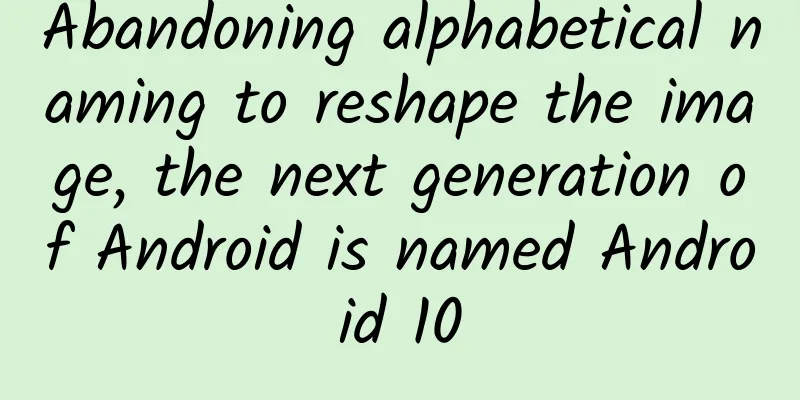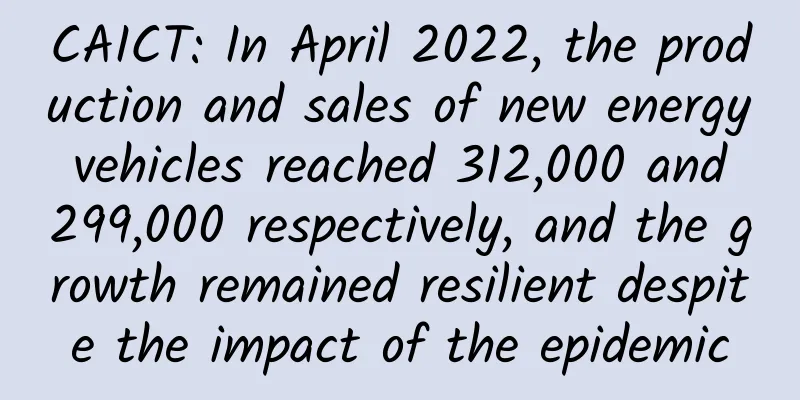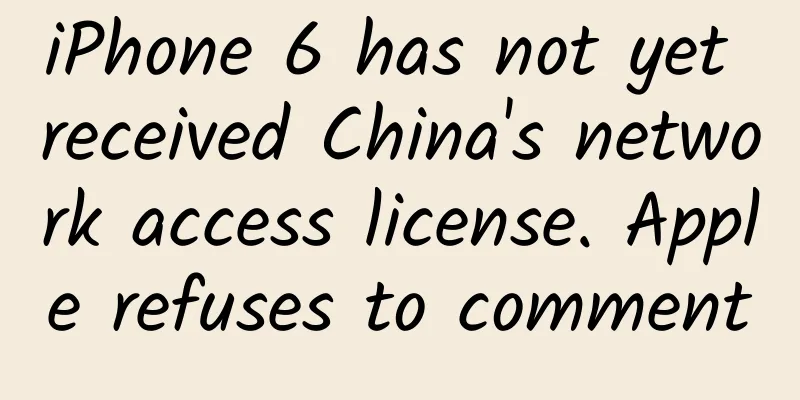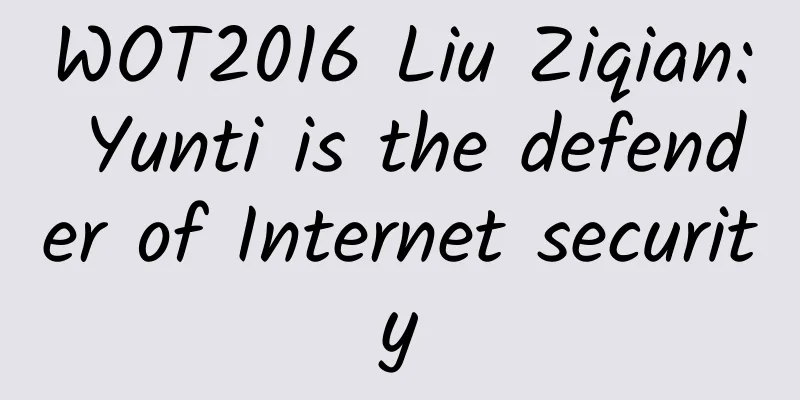The whole story of the suspension of LeEco's supercar Faraday factory: illusion, bubble, scam and the driving force behind it
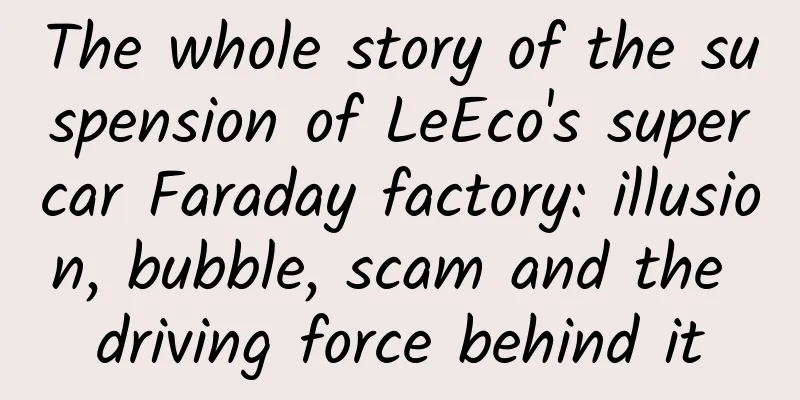
|
North Las Vegas, Nevada. Although it has a North in its name, its fate is far different from that of Las Vegas. Before 2014, the city was on the verge of bankruptcy and had to rely on financial assistance from the state government. This is also why, when an electric car company called Faraday Future (hereinafter referred to as Faraday) decided to invest $1 billion to build a factory here, the city of North Las Vegas and even the entire state of Nevada were like seeing the God of Wealth. Faraday's factory construction plan has received strong support from Nevada Governor Brian Sandoval and North Las Vegas Mayor John Lee. Under their promotion, Nevada passed a business incentive bill in just two days, allocating $120 million in the name of the Nevada government to invest in infrastructure construction in the area where Faraday will move in. In addition, Nevada will also issue a financial package worth up to $335 million to Faraday to attract the factory to North Las Vegas. What they didn't expect was that the project was completely suspended due to lack of funds before Thanksgiving. Questions arose immediately: the contractor AECOM announced that the project would be delayed until early 2017 and refused all interviews; the Nevada Treasurer said in an interview with the media that LeTV, the financial backer behind Faraday, was a "Ponzi scheme" and publicly questioned the governor's office for not conducting a comprehensive due diligence; a Faraday spokesperson announced that the suspension was due to "strategic adjustments" and that funds and energy would be focused on making cars. PingWest interviewed Nevada government officials, obtained Faraday's factory construction project documents, and went to the factory in person to try to find out what problems this factory and this company had encountered. Illusion: $1.375 billion investment, 13,000 jobs, and creating another Tesla A project document obtained by PingWest and submitted by Dag Reckhorn, Faraday's vice president of global manufacturing, shows that Faraday will purchase a total area of 938 acres (about 3.8 square kilometers) of land in the APEX Industrial Park in the northeast corner of North Las Vegas, Clark County, Nevada, to build a Faraday electric vehicle production plant. This land is located in the APEX Industrial Park, which was originally planned by the state to attract investment. It has a superior geographical location, next to Highway 93, and is only 15-25 miles away from North Las Vegas and the casino. The land purchase cost is $26 million, just a fraction of the total project cost. Project documents show that Faraday will also pay $612 million in construction costs and $737 million in equipment costs. According to Rickhorn's plan, the factory will be completed in the third or fourth quarter of 2017, and the final total investment will reach $1.375 billion. According to the appendix to the aforementioned project document, a project blueprint dated November 20, 2015, the factory includes key modules such as powertrain, body plant, paint plant, assembly line, etc., and has the ability to manufacture complete vehicles. In the project documents, Rickhorn promised that Faraday's factory would employ 4,500 local employees within 10 years and create a total of 13,000 jobs in and around the factory, with hourly wages ranging from $22 to $26, significantly higher than the local average. According to a 2015 population census report, the total population of North Las Vegas is about 220,000, with an average hourly wage of only about $13. Not only that, Rickhorn also promised to generate $765 million in taxes and a total of $87.5 billion in output for the state over 20 years. In order to attract the "God of Wealth" to benefit Nevada, the governor proposed to issue $175 million in government bonds to Faraday to finance its factory construction plan; when Faraday's investment in Nevada exceeds $1 billion, the state government will also unlock a long-term tax exemption and bonus subsidy package for the company, including 75% corporate tax, corporate asset tax and personal asset tax deductions for up to 10 years, 100% local sales tax deductions for up to 15 years, $38 million in transferable tax credits, and a subsidy to pay for Faraday's employee training expenses. This big package, together with the previous $175 million in government bonds, is worth more than $215 million. For the governor, this is a good deal no matter how you look at it: according to Rickhorn's promise, for every $1 Nevada subsidizes Faraday, it will receive $3.55 in taxes in the long run - a 3.55 times return on investment, and a return on output value of about $400. Time was of the essence. In order to pass this plan, the governor of Nevada suddenly convened a special legislative session at 5 p.m. on December 15, 2015, and passed this business stimulus plan in just two days. This also wrote a footnote for the subsequent controversy within the state government. In fact, this is not the first time that Nevada has held a special legislative session to attract investment. The last time such a meeting was also about an electric car giant, Tesla, and its "Gigafactory", and the result of the discussion was to grant the company a tax incentive of up to $1.3 billion. As a result, Tesla's high-end electric vehicles have set new records in global deliveries year after year, and the hardworking people of Nevada have proudly written the words "Made in the USA" on these products. In the governor's plan, Faraday will also bring the same glory to Nevada - Tesla's factory will be in the north of the town, and Faraday's factory will be in the south, one in the south and one in the north, which will turn Nevada, whose economy used to be highly dependent on the gaming industry, into a home of high-tech electric vehicles. However, ideals cannot defeat reality, and Faraday is not Tesla. The mysterious Eastern investor behind Faraday is certainly not Elon Musk. On April 13, 2016, this project, which was highly anticipated by the Nevada government, "broke ground", and the governor and mayor were all present, and a grand "groundbreaking ceremony" was held. In the photo, Faraday's global supply chain vice president Tom Wessner, global manufacturing vice president Dag Reckhorn, and LeTV's global vice president of SEE program Ding Lei, together with Nevada Governor Brian Sandoval, shoveled a handful of soil on the construction site with a shovel, and a grand groundbreaking ceremony was held. The "groundbreaking ceremony" was filled with cocktail parties, champagne, spotlights, beautiful architectural models, and wonderful promises. But in fact, apart from the small pile of soil shoveled up during the photo shoot, Faraday did not carry out any construction that day, and even the start date has not been announced, only saying that it will "start soon." Bubble: project arrears, project suspension, abandoned construction sites However, six months later, an email from the project contractor AECOM shattered this lively illusion. On October 10 this year, Robert Gay, vice president of AECOM, sent an email to Faraday, saying that the latter had already defaulted on AECOM's $21 million in engineering fees for September, and that Faraday would be given 10 days to pay the full amount to pay for the engineering materials and subcontractors that had already been invested in the project, otherwise the project would be suspended until the "funding problem is resolved." The email also hinted that Faraday would default on engineering fees for the next 10 and 11 months, $25.3 million and $11.8 million respectively. The total of $58.1 million for these three months accounted for less than one-tenth of the "construction costs." According to the original plan to complete the project by the end of 2017, Faraday will have to pay AECOM more every month starting next year. Faraday's promised $1 billion investment in Nevada is becoming more and more slim. The apparent reason for the arrears was that Faraday changed the project schedule and adjusted the priority of the use of funds to focus on "making" the new car exhibited at CES in January 2017. In fact, the suspension of work coincided with the financial and public relations crisis faced by Faraday's financial sponsor LeEco in China. It was reported that LeEco owed billions of RMB to its supply chain partners in the mobile phone and TV business. This incident caused the market value of LeEco's listed company to shrink by 13 billion RMB. Founder and CEO Jia Yueting tried his best to find money, and even asked his classmates from the Cheung Kong Graduate School of Business, founders of Chinese industrial companies such as Heilan Group, Star Group, Minwah Holdings, and Green Leaf Group, to lend him money or invest in him. The news of the suspension of the Faraday project was exposed, which was tantamount to another crisis for LeEco, which was already preoccupied with its own affairs. It quickly came out to deny that everything was going smoothly and there was no suspension of work. However, AECOM sent a statement to PingWest saying that only the basic preparations for the project had been completed, and "Faraday is temporarily adjusting their construction schedule and plans to continue in 2017." Although AECOM said it would keep its promise to its customers and resume work at the beginning of next year according to Faraday's pace, it refused to comment on whether Faraday would keep its promise to AECOM and make up the payment. In fact, there were already signs of all this. As early as before the major crisis in November, six senior executives of Faraday had resigned collectively. The positions of these six people were financial director, operations director, product strategy director, public relations director, legal director and vice president of government affairs, and assistant director of government affairs. From the positions, it can be seen that their resignation is fatal to Faraday's factory construction and new product development. PingWest visited Faraday's construction site in the APEX Industrial Park in North Las Vegas in late November. Turning off Highway 93 onto a small road, you'll find the Faraday factory. The endless land is surrounded by barbed wire, but most of it is barren, with no signs of construction. There are three rows of simple workshops near the main entrance, with some cars parked outside. The last batch of AECOM staff are finishing up the work. When the reporter arrived, there was only one small excavator running in the huge construction site, and after more than an hour, the excavator also stopped. It's hard to tell that this is a construction site that is halfway through its construction period and is scheduled to be completed in the third or fourth quarter of next year. In mid-November, most of the workers had already evacuated, and the equipment had also been removed. Staff said that there would be a dozen workers to do the final finishing work of bulldozing, and then they would evacuate. There would be no more activity on the construction site until the resumption date promised by Faraday in January next year. "We're leaving, we're all leaving." said a staff member who was driving out of the park. In response to PingWest's question about resuming work in January next year, he said gloomily, "I hope so, who knows?!" Under the setting sun in the desert, they all looked very depressed. From Thanksgiving in late November to New Year's Day, it is the traditional holiday season in the United States. It is conceivable that they will have a difficult holiday due to the suspension of the project. In fact, Nevada is one of the states with a high unemployment rate in the United States, which is why the governor of Nevada has such high hopes for Faraday. Even in such an industrial park with many large projects, the Faraday project is still one of the most watched projects. The suspension of the project has also brought shocks to residents and workers around the factory. "Everyone is paying attention to this project because it is the largest project nearby, even larger than the solar panel factory you see next to it." A worker in the park told reporters. "They said before that there would be thousands of workers, and the earth working alone would recruit at least hundreds of people, so everyone was very excited before." Even the manager of the only gas station and convenience store in the park expressed his concerns, saying that workers had come to him a long time ago and said they wanted to leave. "This incident (the suspension of work) has a huge impact. Everyone is watching the relevant news and wants to know what will happen next. This incident will definitely affect everyone's confidence." Another insider told PingWest that this is not the first time that the Faraday project has been suspended. "The project has always had funding issues, so construction has been sporadic, with several minor suspensions. There was also a major suspension in the middle of this year." As long as LeTV can’t find money, Nevada’s electric car dream will be closer to realization. Behind the “Ponzi Scheme”: Who is the driving force behind it? There is another person who has been very opposed to Faraday's factory construction. He is Nevada Treasurer Dan Schwartz. Over the past year, he has been openly and continuously opposing and questioning the Nevada government's subsidy plan for Faraday. Dan Schwartz Schwartz completed his undergraduate education at Princeton, and completed his JD and MBA studies at Boston University and Columbia University. He has worked in the banking industry for 35 years and served as the CEO of the publisher of the Asian Venture Capital Journal, a well-known investment journal in Asia. In 2016 alone, Swartz, as Nevada State Treasurer, published a total of six open letters questioning Faraday. In early January, he expressed his knowledge and concern about the possible impact of the Faraday project on the Chinese stock market fluctuations, and promised to protect the interests of taxpayers. In the second open letter at the end of the month, he began to refer to Faraday's main investor LeTV as Leshi, rather than its new name LeEco, which had just been changed overseas. In the fifth open letter released on May 11 this year, Schwartz said, "As you know, LeEco, the company owned by Jia Yueting and the main investor in the Faraday Factory project, should have resumed trading last Monday. However, the resumption of trading has been postponed several times in the past five months. According to Chinese news reports, there is no definite date for the resumption of trading." At the same time, he also cited reports from the mainstream media in the United States on LeEco's discounted stock issuance and Jia Yueting's cashing out behavior, and expressed his concerns. He said his office has been asking Faraday to submit feedback, but has not received any documents that can prove that the project is progressing as scheduled. In this open letter, Schwartz also accused Jia Yueting of suspected capital manipulation, "Mr. Jia used 70% of his company's shares as collateral to obtain loans." He said, "Until Faraday publicly discloses more details about their financial plans and construction schedules, we will not stop worrying about the feasibility of Faraday's project." After the shutdown in November, Schwartz's concerns seemed reasonable. In interviews with multiple Chinese and American media, he directly called LeEco a Ponzi scheme: "The money raised from one project was used to stuff it into other projects." Nearly a month after the shutdown, Governor Sandoval finally hit back at the finance minister who had been questioning Faraday's subsidy plan through a local TV station in North Las Vegas on Thursday. He revealed that he had recently visited Faraday's headquarters in Southern California and saw the concept design materials and prototypes of the new car. "We are confident that Faraday can bring economic contributions to North Las Vegas and Nevada." Faraday did release a prototype car: at CES held earlier this year, Faraday held a grand press conference in Las Vegas, but only exhibited a "concept car" that looked sci-fi. The Verge, a technology media outlet, commented that it "did not seem to have any basis in reality". In October this year, LeEco also held a grand press conference in San Francisco, but the LeSee concept car, which was originally planned to be driven by Jia Yueting himself, "had a car accident on the way from Los Angeles to San Francisco" and failed to appear as scheduled. In a statement to PingWest, Schwartz said sarcastically that he was "inspired" by the governor's optimism and the mayor's faith after reading the news reports. He said, "Like them, I hope to see the success of APEX Industrial Park. I support any feasible and well-reviewed economic development project. But Faraday has no income except for the financial support of Jia Yueting himself and LeTV. The whole world seems to know that the economic news related to Jia Yueting and LeTV is negative. Wishful thinking and prayers cannot change the truth." In a later telephone interview with PingWest, Schwartz said Nevada would not suffer substantial financial losses from this incident, but he questioned the governor's failure to conduct a legal and adequate review of the entire transaction before using his power to convene a special legislative session. "This is the biggest reason why I oppose the governor." To this day, Schwartz still believes that he is on the same side as the governor. "We have been actively working with the governor's office, Faraday and other parties. But unfortunately, to this day, I have not received any documents or information to prove that the project will proceed smoothly." Swartz concluded his statement: "At this point, my only advice to the governor and mayor is: end this obvious fraud. And make sure they (Faraday/LeTV) leave you a seat on the lifeboat." PingWest contacted the Sandoval governor’s office, but they did not respond to this statement. Mayor John Lee said in an interview that Faraday Future has received more than $120 million of the $1 billion guaranteed investment. "I hope the finance minister will stop interfering with our vision." In their eyes, Faraday still has a future. Unfortunately, not many people hold the same view. As a winner of Toutiao's Qingyun Plan and Baijiahao's Bai+ Plan, the 2019 Baidu Digital Author of the Year, the Baijiahao's Most Popular Author in the Technology Field, the 2019 Sogou Technology and Culture Author, and the 2021 Baijiahao Quarterly Influential Creator, he has won many awards, including the 2013 Sohu Best Industry Media Person, the 2015 China New Media Entrepreneurship Competition Beijing Third Place, the 2015 Guangmang Experience Award, the 2015 China New Media Entrepreneurship Competition Finals Third Place, and the 2018 Baidu Dynamic Annual Powerful Celebrity. |
<<: The official pictures of the final version of the Wrangler will be released in February 2017
Recommend
National Day Special: 30 pictures to see the "stunning beauty" of China!
On the land of China The blue color of water and ...
Pinduoduo’s 5 high-conversion marketing strategies!
Pinduoduo , a new internet celebrity and a three-...
Let’s go! Cross China’s longest National Highway 219
According to the latest version National Highway ...
Popular Science | Learn about the important vitamin for the human body - Vitamin K
Vitamins are an essential topic when it comes to ...
An asteroid may hit the Earth in 2032. Do humans need to save themselves? Experts: Don't worry.
Millions of years ago, an asteroid hit, causing s...
User growth has undergone a qualitative change, from AARRR to RARRA!
Today, the topic I want to share with you is the ...
AI is taking programmers' jobs: AI may replace programmers in 2040
Some experts at Oak Ridge National Laboratory in ...
21-day life planning training camp, how about the 21-day training camp?
21-day life planning training camp, how about the...
FirstCar.com: Top 10 pure electric sedans with the highest value retention rate in 2023 BYD Han EV has a one-year value retention rate of 70.66%, surpassing Tesla Model 3 to win the championship
Recently, the first car network announced the top...
MSI launches the W25 desktop workstation and a full range of mobile workstations to create the ultimate user experience
A full range of workstations equipped with the la...
Huoqiu Flower Mini Program Agent Price Query, How much is the Huoqiu Flower Mini Program Agent Price?
How much does it cost to be an agent for a flower...
The digital advertising landscape in 2022 (Part 1)
Judging from the revenue situation, the pattern o...
The "soul" powder on the rolls, once the namesake of Sri Lanka, is more valuable than gold!
As the saying goes, "Without rice, there is ...
What are the recommended tea tasting places with the best cost performance in Changsha? What are the high-end takeaway tea places?
What are the recommended tea tasting places with t...
How to promote advertising on Kuaishou? How much does it cost to promote on Kuaishou?
1. How effective is Kuaishou advertising ? Everyo...

